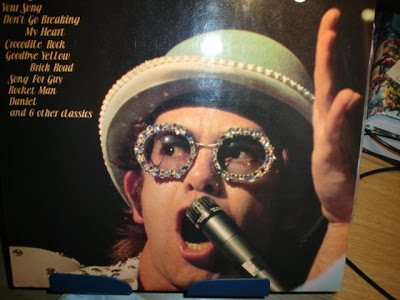
Not one of my favourite bands of the 1980s, but Dave Stewart and Annie Lennox's Eurhythmics, ticked a few boxes: synthesizers, drum machine, songcraft, lush orchestration. While they began with an icy Germanic feel, their movement into pop-soul was much less interesting.
But after more than a quarter of a century it's their name that intrigues. Was it a neologism? Something to do with Europe? Clearly, rhythm is a separate word - but eurhythmics??
Here's Henri Lefebvre from Rhythmanalysis: space, time and everyday life:
At no moment have the analysis of rhythms and the rhythmanalytical project lost sight of the body. Not the anatomical or functional body, but the body as polyrhythmic and eurhythmic (in the so-called normal state). As such, the living body has (in general) always been present: a constant reference . The theory of rhythms is founded on the experience and knowledge of the body; the concepts derive from this consciousness and this knowledge, simultaneously banal and full of surprises - of the unknown and the misunderstood.
Along with arrhythmia, isorhythmia (the equality of rhythms) completes this repertoire of fundamental concepts. With one reservation: iso- and eu-rhythmia are mutally exclusive. There are few isorhythmias, rhythmic equalities or equivalences, except of a higher order. On the other hand, eurhythmias abound: everytime there is an organism, organisation, life (living bodies).
In this respect, thought could return to the Liebnizian principle apparently abandoned by philosophers, logicians and scientific types. Were there isorhythmia between two temporalities, they would coincide. Equivalence entails identity (and reciprocally, non-identity implies difference); polyrhythmia is composed of diverse rhythms. Eurhythmia (that of the living body, normal and healthy) presupposes the association of different rhythms. In arrhythmia, rhythms break apart, alter and bypass synchronisation (the usual term for designating this phenomena). A pathological situation - agreed! - depending on the case; interventions are made, or should be made, through rhythms, without brutality. (67)
What does eurhythmia sound like? Is it limiting to narrow down rhythms to what we hear? What about the rhythms, the durations, the repetitions, of seeing birds flying between trees, of the taste of coffee every morning, of the smell of lavender in bloom, of rubbing shampoo into your scalp??
Eurhythmia, then. Polyrhythmic - multiple rhythms. But not iso-rhythmic or arrhythmic. Perhaps, as LeFebvre puts it: a harmony of rhythms.
Sounds like . . . Bill Evans' piano solo on Miles Davis sextet's All Blues.
But after more than a quarter of a century it's their name that intrigues. Was it a neologism? Something to do with Europe? Clearly, rhythm is a separate word - but eurhythmics??
Here's Henri Lefebvre from Rhythmanalysis: space, time and everyday life:
At no moment have the analysis of rhythms and the rhythmanalytical project lost sight of the body. Not the anatomical or functional body, but the body as polyrhythmic and eurhythmic (in the so-called normal state). As such, the living body has (in general) always been present: a constant reference . The theory of rhythms is founded on the experience and knowledge of the body; the concepts derive from this consciousness and this knowledge, simultaneously banal and full of surprises - of the unknown and the misunderstood.
Along with arrhythmia, isorhythmia (the equality of rhythms) completes this repertoire of fundamental concepts. With one reservation: iso- and eu-rhythmia are mutally exclusive. There are few isorhythmias, rhythmic equalities or equivalences, except of a higher order. On the other hand, eurhythmias abound: everytime there is an organism, organisation, life (living bodies).
In this respect, thought could return to the Liebnizian principle apparently abandoned by philosophers, logicians and scientific types. Were there isorhythmia between two temporalities, they would coincide. Equivalence entails identity (and reciprocally, non-identity implies difference); polyrhythmia is composed of diverse rhythms. Eurhythmia (that of the living body, normal and healthy) presupposes the association of different rhythms. In arrhythmia, rhythms break apart, alter and bypass synchronisation (the usual term for designating this phenomena). A pathological situation - agreed! - depending on the case; interventions are made, or should be made, through rhythms, without brutality. (67)
What does eurhythmia sound like? Is it limiting to narrow down rhythms to what we hear? What about the rhythms, the durations, the repetitions, of seeing birds flying between trees, of the taste of coffee every morning, of the smell of lavender in bloom, of rubbing shampoo into your scalp??
Eurhythmia, then. Polyrhythmic - multiple rhythms. But not iso-rhythmic or arrhythmic. Perhaps, as LeFebvre puts it: a harmony of rhythms.
Sounds like . . . Bill Evans' piano solo on Miles Davis sextet's All Blues.
Bill is pictured above. Dreaming of trees?




